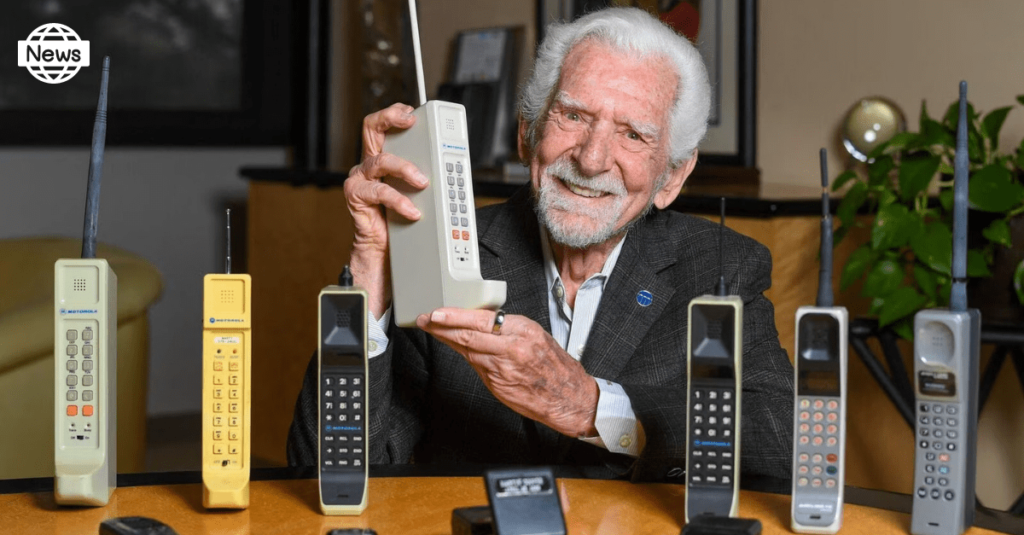The issue with cell phones is that users spend too much time staring at them. At least, that’s what the man who created them fifty years ago claims. The handy little gadget we all carry about in our pockets, according to Martin Cooper, an American engineer known as the “Father of the Cell Phone,” has practically limitless potential and may one day even aid in the treatment of sickness. Yet, we might be a touch obsessive right now.
“I am devastated when I see somebody crossing the street and looking at their cell phone. They are out of their minds,” the 94-year-old told AFP from his office in Del Mar, California. “But after a few people get run over by cars, they’ll figure it out,” he joked.
Cooper switches effortlessly between his email, photographs, YouTube, and the controls for his hearing aid while using an Apple Watch and a high-end iPhone. Every time a new model is out, he gets his hands on it and thoroughly tests it on the road. But he acknowledges that with so many apps available, it can all feel a little overwhelming. According to him, “I will never, ever comprehend how to use a cell phone the way my grandchildren and great grandchildren do.”
Cooper’s iPhone has come a long way from the bulky block of wires and circuits that he used to place the first mobile phone call on April 3, 1973, and he claims that he prefers to use it largely for talking to people. He was working at Motorola at the time and was in charge of a group of designers and engineers who were racing to develop the first truly mobile technology in order to stay competitive in a developing market.
In an effort to outcompete Bell System, a titan that dominated US telecoms for more than a century starting in 1877, the corporation had invested millions of dollars in the initiative. Just after World War II, Bell’s engineers proposed the notion of a cellular phone system, and by the late 1960s, they had advanced it to the point of installing phones in automobiles, in part because of the enormous battery they required. Cooper, though, believed that was not true mobility.
He made the decision to create a portable gadget around the end of 1972. Thus, using all of Motorola’s resources, he assembled a team of specialists in semiconductors, transistors, filters, and antennae that worked nonstop for three months. They succeeded in solving the problem by the end of March, releasing the DynaTAC- Dynamic Adaptive Total Area Coverage phone. He said that the phone weighed more than a kilo, or around 2.5 pounds, and had a talk time battery life of about 25 minutes. “It wasn’t an issue. You couldn’t support the weight of this phone for 25 minutes.”
The first mobile phones were expensive at around $5,000 per handset, but they gave early adopters such as real estate people an edge by allowing them to show people houses and answer the phone for new clients at the same time. Mobile phones have since become an extension of the person and can do many more things, such as revolutionizing education, healthcare, and catching illness before it develops. Cooper always knew the device he and his team came up with would change the world, and now there are more mobile phone subscriptions in the world than there are people. He is not worried about the problem of people gawping at their phones too much, as new technology often throws up challenges. Each generation is going to be smarter and learn how to use the cell phone more effectively, and humans will eventually figure it out.
